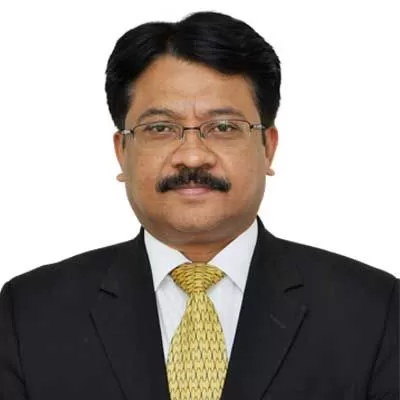- Home
- Infrastructure Urban
- ECONOMY & POLICY
- What the experts decided...
What the experts decided...
As per the practice, a report with quantitative analysis the data sourced from published annual reports and results published by the companies was submitted to the members of the jury much earlier, to allow them to assess the numbers associated with the companies in each category. Even in the case of non-listed firms, such data was sourced from the company directly by seeking their audited figures. To ensure authenticity of data during compilation, various checks and balances were put into place. The jury was also informed that the data was further audited selectively to ensure that errors do not creep in.
As a prelude to the discussion, a presentation on the parameters of the model was made by us. Further, the panelists discussed the definition of large, medium and small companies and the rationale for the choice of companies along with criteria such as cut-off levels for selecting companies in various categories. The members were also asked to indicate companies of their choice that failed to make it on our list. Such recommendations of companies not previously on the list were noted and put to test on the model. The final result took into account suggestions of the jury members. Companies not considered for the awards were those with insufficient data available; or those that suffered losses in FY2013; or whose figures derived mainly from ´in-house performance´.
While deliberating on the data provided in the Large Construction Companies of the Year category, the members debated on quantitative parameters, whether PAT or EBIDTA or a combination of both should be used as a yardstick of judgment particularly in the case of large companies with diversified businesses. It was pointed out that PAT captured the interest costs in the case of debt-heavy companies, depreciation allowance and tax provisioning, which reflect the true position of a company and that consideration of EBIDTA in the case of a few companies was not appropriate. However, the jury was persuaded to veer around to the view that while only PAT should be a yardstick for selection wherever they were found unavailable, EBITDA could be considered as an option. The last to be applied in the case of companies with multiple segments in which ´construction´ was just one of the many categories of operations. The jury agreed that since the objective was to identify the largest and fastest growing company, the emphasis should be on both topline and bottomline growth. Some of the members of the jury also recommended in the case of a few companies that the statistics provided needed to be revisited. The jury members discussed the all-round performance of various companies during the period under review and ´industry perceptions´ about them. Some of the companies ranked higher in the model were pushed down by the jury due to their concerns on governance.
The members of the jury debated at great length on the Construction World Man of the Year and Woman of the Year categories. While in the men´s category ´individual contribution to an organisation´s success´, a national focus and forward movement of projects on the ground came under focus in the selection of the winners, in the case of the women´s category, the jury found the personality options in the list having too much of a local flavour and therefore offering a limited choice in terms of selections. Sunil Damania, Executive Editor, Business India, made a presentation on the companies to be considered for the awards.
CW´s annual jury meet to deliberate on the winners in various categories of construction companies and to announce the Man of the Year and Woman of the Year, convened at the Indian Merchants Chamber of Commerce in Mumbai on August 29, 2013. As per the practice, a report with quantitative analysis the data sourced from published annual reports and results published by the companies was submitted to the members of the jury much earlier, to allow them to assess the numbers associated with the companies in each category. Even in the case of non-listed firms, such data was sourced from the company directly by seeking their audited figures. To ensure authenticity of data during compilation, various checks and balances were put into place. The jury was also informed that the data was further audited selectively to ensure that errors do not creep in. As a prelude to the discussion, a presentation on the parameters of the model was made by us. Further, the panelists discussed the definition of large, medium and small companies and the rationale for the choice of companies along with criteria such as cut-off levels for selecting companies in various categories. The members were also asked to indicate companies of their choice that failed to make it on our list. Such recommendations of companies not previously on the list were noted and put to test on the model. The final result took into account suggestions of the jury members. Companies not considered for the awards were those with insufficient data available; or those that suffered losses in FY2013; or whose figures derived mainly from ´in-house performance´. While deliberating on the data provided in the Large Construction Companies of the Year category, the members debated on quantitative parameters, whether PAT or EBIDTA or a combination of both should be used as a yardstick of judgment particularly in the case of large companies with diversified businesses. It was pointed out that PAT captured the interest costs in the case of debt-heavy companies, depreciation allowance and tax provisioning, which reflect the true position of a company and that consideration of EBIDTA in the case of a few companies was not appropriate. However, the jury was persuaded to veer around to the view that while only PAT should be a yardstick for selection wherever they were found unavailable, EBITDA could be considered as an option. The last to be applied in the case of companies with multiple segments in which ´construction´ was just one of the many categories of operations. The jury agreed that since the objective was to identify the largest and fastest growing company, the emphasis should be on both topline and bottomline growth. Some of the members of the jury also recommended in the case of a few companies that the statistics provided needed to be revisited. The jury members discussed the all-round performance of various companies during the period under review and ´industry perceptions´ about them. Some of the companies ranked higher in the model were pushed down by the jury due to their concerns on governance. The members of the jury debated at great length on the Construction World Man of the Year and Woman of the Year categories. While in the men´s category ´individual contribution to an organisation´s success´, a national focus and forward movement of projects on the ground came under focus in the selection of the winners, in the case of the women´s category, the jury found the personality options in the list having too much of a local flavour and therefore offering a limited choice in terms of selections. Sunil Damania, Executive Editor, Business India, made a presentation on the companies to be considered for the awards.




















